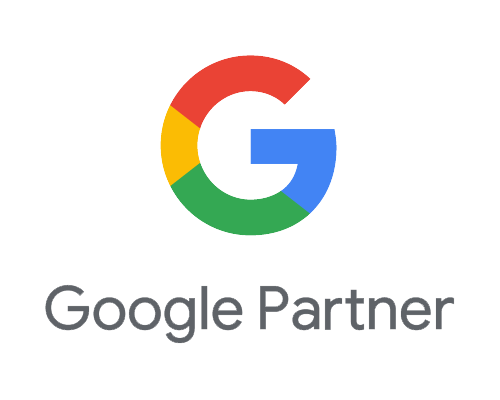
The 5 Most Crucial KPIs for Paid Search & Paid Social Campaigns
The 5 Most Crucial KPIs for Paid Search & Paid Social Campaigns
Think of your screen time over the past 24 hours… How many ads did you see?
We’re inundated with advertisements across our digital devices every minute. Some estimates put the daily amount of ads we’re exposed to upwards of 10,000. That number is incomprehensible. But it always paints the picture of what you’re up against. So if you want your paid search and social efforts to pay off (no pun intended), your campaigns need to deliver.
The only way to know if your paid search and social campaigns are resonating with your target audience is through key performance indicators (KPIs). But surprisingly, many marketers neglect to do so, with over 72% admitting to not reviewing their ad campaigns for over a month.
Our paid marketing team at Möve manages successful paid advertisement strategies for many clients. We sat down with one of our paid experts, Sam Fiorillo, to get his expertise on which KPIs are most crucial for paid search and paid social campaigns.
In this blog, we’ll break down Sam’s 5 most crucial paid advertising KPIs to measure for success:
- Return On Ad Spend (ROAS)
- Customer Acquisition Cost (CAC)
- Cost Per Lead (CPL)
- Cost Per Click (CPC) + Conversion Rate (CVR)
- Click-through Rate (CTR) + Bounce Rate
1 - Return On Ad Spend (ROAS)
Paid advertisements come with a hefty price tag these days. The average mid-size company spends upwards of $10,000 per month on PPC (pay per click) campaigns. Calculating your ROAS helps you understand if they’re effective.
Here’s the catch—according to Sam, there are 2 different ways to calculate ROAS, and they tell you different things:
(new customers x LTV) / Cost of ads = ROAS based on LTV
- ROAS based on immediate deal:
(deal value/ paid advertising cost)
Both of these give you an accurate depiction of how your paid search and paid social campaigns are performing. ROAS based on immediate deal is more short-term and ROAS based on LTV is long term. Sam (along with most paid marketers) argues that ROAS based on LTV is the ideal equation to use since it looks at your lifetime paid efforts. But it’s also the most difficult to obtain given lengthy sales cycles.
2 - Customer Acquisition Cost (CAC)
Sam might yell at me for putting this KPI as a standalone, as he explicitly stated to group CAC and ROAS together. But given they are technically two separate KPIs, I figured it would be best to separate them out so as not to confuse anyone.
Customer Acquisition Cost = Cost of paid efforts / # of new customers acquired
Customer acquisition cost tells you how much you spend to acquire new customers. But as Sam mentions, looking at strictly CAC can give you a slightly inaccurate interpretation of your marketing efforts.
For example, a CAC of $150 may seem high. But if you factor in a customer’s average lifetime gross margin is $10,000, you’ll realize your true CAC is actually much lower.
3 - Cost Per Lead (CPL)
Cost per lead is pretty straightforward; the amount of money spent on paid search or paid social efforts to generate a new lead:
Paid search + social spend / Total # of generated leads
According to Sam, this is the core metric he looks at when monitoring paid efforts day-to-day. The reason being? As mentioned above, ROAS and CAC calculations are difficult to get. So while waiting for clean, accurate data on them, CPL gives you the best performance indication at any given time.
4 - Cost Per Click (CPC) + Conversion Rate (CVR)
Sam says CPC and conversion rates are tied together since they’re core components of CPL: (CPL = CPC/CVR)
By improving CPC and Conversion Rate, you positively impact CPC.
- Adjust your bidding strategy
- Avoid competitive keywords
- Improved audience segmentation
- Improve your ad quality
- Optimize copy/CTA
- Align content with audience
- Test out different CTAs
- A/B Test entire ad
5 - Click Through Rate (CTR) + Bounce Rate
If you don’t have conversion data, these two KPIs are the next best thing.
CTR = clicks/impressions
Bounce rate: sessions with only one pageview / total site sessions
Both of these KPIs center around engagement and indicate whether your paid ads are resonating with your audience. You want a high CTR and a low bounce rate. If you’re not seeing that, you need to spend time evaluating your campaigns and understanding why your audience isn’t engaging with them.
So what’s a good CTR? It varies by industry, but we think you should be able to achieve something in the range of 3-5%.
Final Thoughts
Paid search and paid social campaigns are essential to modern-day marketing strategies. Why? Two main reasons:
- 47% of global purchases are made online
- 59% of consumers research products online before purchasing
In order to survive, you need to be where your audience is… online. But it’s not enough to simply be there, you need to be making meaningful connections with your audience. Setting KPIs is the only way to know whether your paid campaigns are making an impact, and provide guidance on how you can optimize for success.
Want to put an expert, like Sam, in your corner? Get a free online advertising campaign consultation to see what Möve can do for your business.




